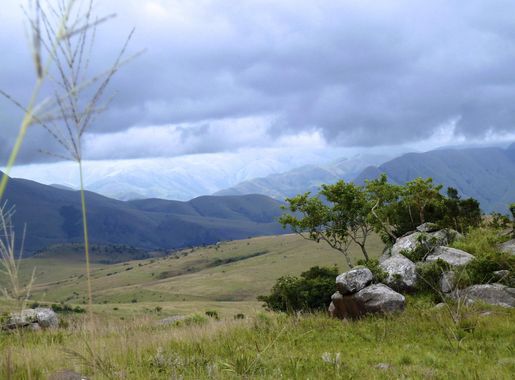
Malolotja Nature Reserve: A Haven of Untouched Wilderness
Explore the untouched beauty of Malolotja Nature Reserve in Eswatini, a sanctuary for hikers, bird watchers, and wildlife enthusiasts.
Nestled in the stunning highlands of Eswatini, the Malolotja Nature Reserve stands as one of the most pristine and unspoiled natural reserves in Southern Africa. This expansive 18,000-hectare reserve is a paradise for nature lovers, offering a rich tapestry of rolling hills, deep valleys, and pristine streams. The reserve is home to a remarkable diversity of flora and fauna, making it a perfect destination for hiking, bird watching, and wildlife photography. Visitors to Malolotja can explore over 200 kilometers of well-marked trails that wind through the reserve's varied landscapes. The trails range from easy walks to challenging hikes, catering to all levels of fitness and experience. Among the highlights is the Malolotja Falls, one of the highest waterfalls in Eswatini, which cascades down a series of stunning rock formations. The view from the top of these falls offers an unforgettable panorama of the surrounding wilderness. For those interested in wildlife, Malolotja is a haven for bird watchers, with over 280 species recorded in the reserve. The reserve is also home to several rare and endangered species, including the elusive serval and the majestic blue crane. Whether you're camping under the stars or staying in one of the reserve's comfortable lodges, Malolotja Nature Reserve provides a truly immersive experience in one of Eswatini's most beautiful natural settings.
Local tips in Malolotja Nature Reserve
- The best time to visit is during the dry season (May to September) when the weather is mild and wildlife is easier to spot.
- Bring sturdy hiking boots and plenty of water as the trails can be rugged and steep in places.
- Don't forget your binoculars and camera for bird watching and capturing the stunning landscapes.
- Check for guided tours offered by the reserve to enhance your experience and learn more about the local flora and fauna.
Malolotja Nature Reserve: A Haven of Untouched Wilderness
Nestled in the stunning highlands of Eswatini, the Malolotja Nature Reserve stands as one of the most pristine and unspoiled natural reserves in Southern Africa. This expansive 18,000-hectare reserve is a paradise for nature lovers, offering a rich tapestry of rolling hills, deep valleys, and pristine streams. The reserve is home to a remarkable diversity of flora and fauna, making it a perfect destination for hiking, bird watching, and wildlife photography. Visitors to Malolotja can explore over 200 kilometers of well-marked trails that wind through the reserve's varied landscapes. The trails range from easy walks to challenging hikes, catering to all levels of fitness and experience. Among the highlights is the Malolotja Falls, one of the highest waterfalls in Eswatini, which cascades down a series of stunning rock formations. The view from the top of these falls offers an unforgettable panorama of the surrounding wilderness. For those interested in wildlife, Malolotja is a haven for bird watchers, with over 280 species recorded in the reserve. The reserve is also home to several rare and endangered species, including the elusive serval and the majestic blue crane. Whether you're camping under the stars or staying in one of the reserve's comfortable lodges, Malolotja Nature Reserve provides a truly immersive experience in one of Eswatini's most beautiful natural settings.
When is the best time to go to Malolotja Nature Reserve?
Iconic landmarks you can’t miss
Mlilwane Game Sanctuary
Experience the natural beauty of Mlilwane Game Sanctuary, a premier nature preserve in Eswatini, where wildlife encounters and breathtaking landscapes await.
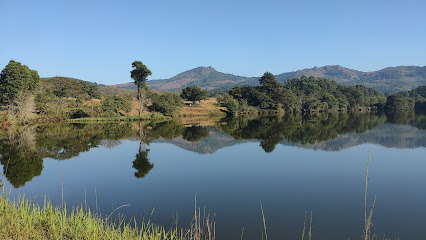
Hilton Garden Inn Mbabane
Discover modern comfort and exceptional service at the Hilton Garden Inn Mbabane, your gateway to the beauty of Eswatini.
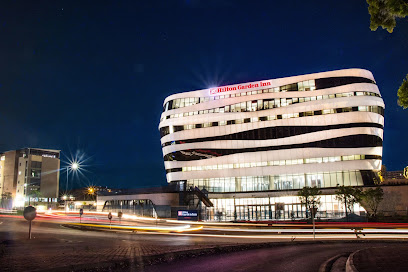
Summerfield Botanical Garden & Exclusive Resort
Experience the enchanting beauty of nature at Summerfield Botanical Garden & Exclusive Resort in Eswatini, where luxury meets tranquility.

Mantenga Cultural Village
Discover the vibrant traditions of Eswatini at Mantenga Cultural Village, a living museum in the scenic Ezulwini Valley rich with cultural experiences.
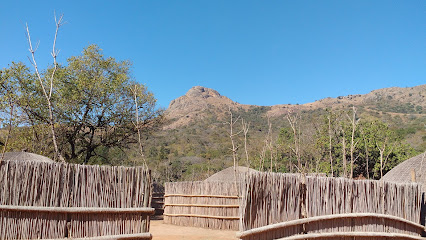
Hlane Royal National Park
Discover the Wild Heart of Eswatini at Hlane Royal National Park - A Sanctuary of Nature and Wildlife Adventures Await.
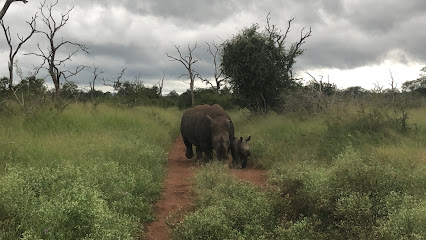
Mlawula Nature Reserve
Discover the breathtaking landscapes and diverse wildlife of Mlawula Nature Reserve, a premier national park in the heart of Eswatini.

Malolotja National Park
Explore the stunning landscapes and rich biodiversity of Malolotja National Park, a natural gem in Eswatini, perfect for nature lovers and adventurers.
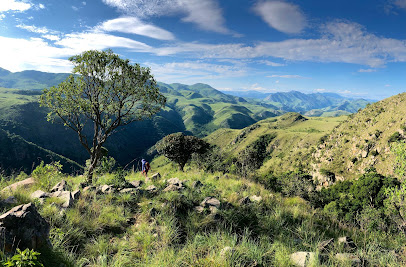
Malolotja Canopy Tour
Discover the breathtaking beauty of Eswatini from above at Malolotja Canopy Tour, an unforgettable ziplining experience through lush landscapes.

Mbuluzi Game Reserve
Explore the stunning Mbuluzi Game Reserve in Eswatini, where diverse wildlife and breathtaking landscapes create an unforgettable nature adventure.
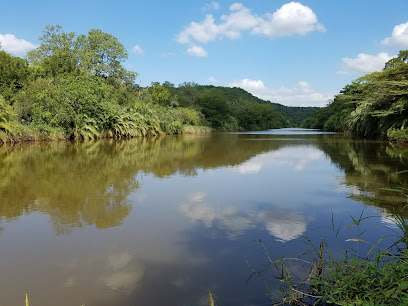
Sibebe Rock
Explore Sibebe Rock, a breathtaking granite monolith in Eswatini, offering stunning views, diverse wildlife, and a rich cultural experience for nature lovers.
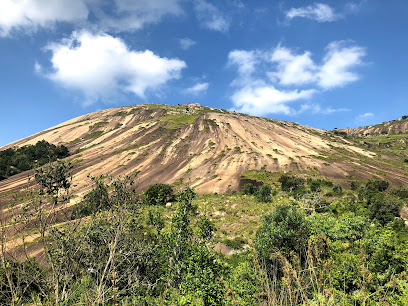
Mkhaya Game Reserve
Experience the breathtaking wildlife and stunning landscapes of Mkhaya Game Reserve in Eswatini, a premier destination for nature lovers and adventure seekers.

Maguga Dam
Explore the stunning Maguga Dam in Eswatini, a serene reservoir surrounded by breathtaking landscapes, rich wildlife, and outdoor adventures.
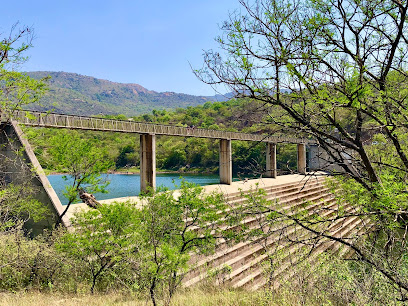
Main Camp Shewula Nature Reserve
Explore the serene beauty of Main Camp Shewula Nature Reserve in Eswatini, a perfect rest stop amidst nature's splendor.
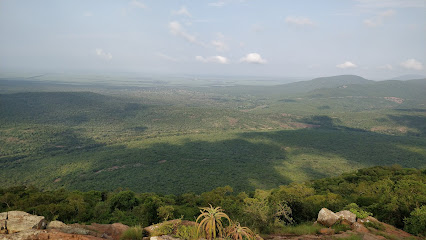
Sheba's Breast Hiking Trail
Explore the breathtaking beauty of Sheba's Breast Hiking Trail in Eswatini, where adventure meets stunning landscapes and rich biodiversity.
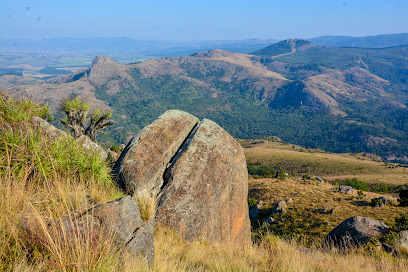
KaMsholo Bushveld Safaris
Discover the heart of Eswatini at KaMsholo Bushveld Safaris, where adventure meets tranquility in the breathtaking KaMsholo Game Reserve.
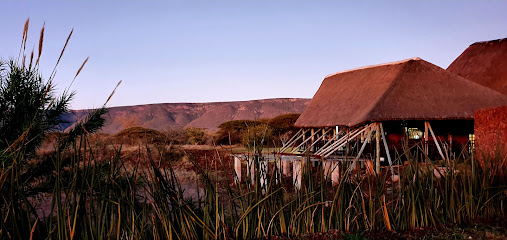
Unmissable attractions to see
Hlane Royal National Park
Experience the untamed beauty of Hlane Royal National Park, where wildlife encounters and stunning landscapes await in the heart of Eswatini.
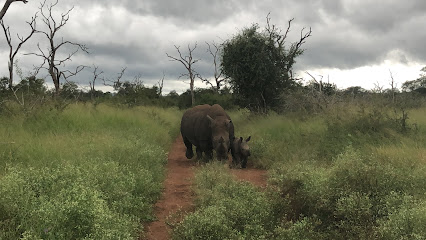
Sheba's Breast Hiking Trail
Explore the breathtaking Sheba's Breast Hiking Trail in Eswatini, where lush forests meet rocky terrains, offering stunning views and unforgettable adventures.
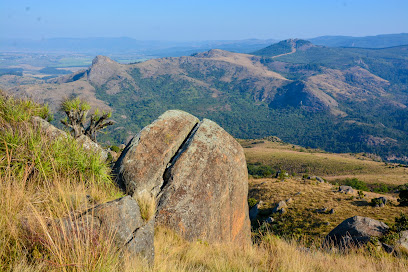
Lion Cavern Ngwenya
Discover the stunning beauty and geological wonders of Lion Cavern Ngwenya, a must-visit tourist attraction in Eswatini.
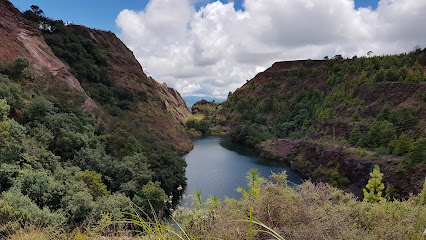
Logwala Viewpoint
Discover breathtaking vistas and tranquil nature at Logwala Viewpoint, a must-visit scenic spot in Eswatini's Mololotja Nature Reserve.
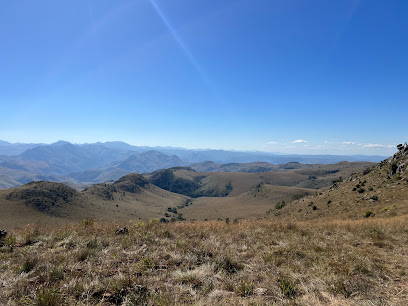
Nsangwini Rock Art
Explore the stunning Nsangwini Rock Art in Eswatini, a UNESCO World Heritage site showcasing ancient engravings and breathtaking natural beauty.
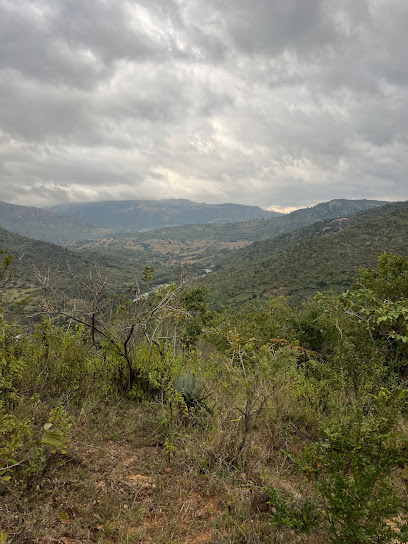
Top Potholes
Explore Top Potholes in Nkhaba, Eswatini, a unique geological wonder showcasing stunning natural beauty and captivating landscapes perfect for adventure seekers.

Essential places to dine
Mlilwane Game Sanctuary
Discover the enchanting wildlife and cultural richness at Mlilwane Game Sanctuary in Eswatini - a perfect escape into nature's embrace.
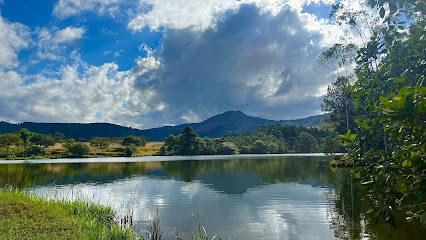
Hilton Garden Inn Mbabane
Discover modern comfort at Hilton Garden Inn Mbabane - your gateway to exploring Eswatini's rich culture and natural beauty.
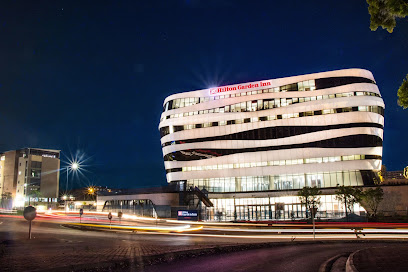
Mantenga Lodge
Experience tranquil accommodations and authentic dining at Mantenga Lodge in Eswatini's scenic Ezulwini Valley.
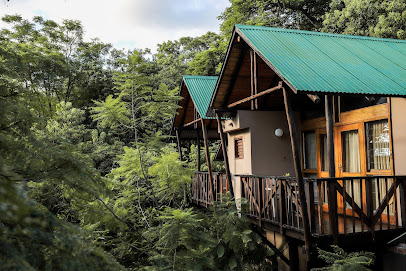
Lugogo Sun
Experience comfort and culture at Lugogo Sun, your ideal retreat in Lobamba, Eswatini with stunning views and local charm.

Summerfield Botanical Garden & Exclusive Resort
Experience luxury and tranquility at Summerfield Botanical Garden & Exclusive Resort in Eswatini - where nature meets comfort.

Foresters Arms
Experience unparalleled hospitality at Foresters Arms in Eswatini - your perfect retreat surrounded by nature's beauty.
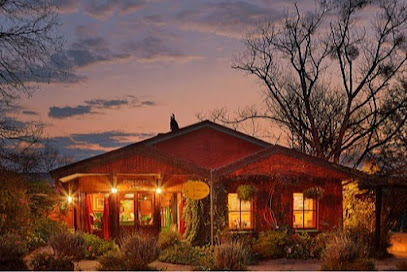
Ramblas Restaurant Mbabane
Discover the vibrant culinary scene at Ramblas Restaurant in Mbabane, where local flavors meet international cuisine in a cozy atmosphere.
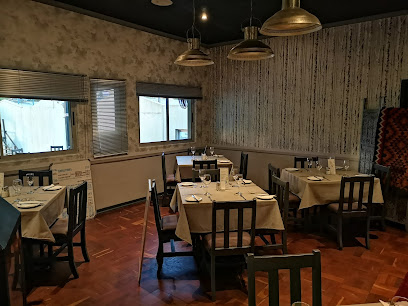
Maguga Lodge
Discover Maguga Lodge: A serene escape offering comfortable stays and exciting outdoor adventures amidst Eswatini's stunning landscapes.

Nando's Mbabane Drive Thru
Experience the zest of flame-grilled peri-peri chicken at Nando's Mbabane Drive Thru - where South African and Portuguese flavors come alive!
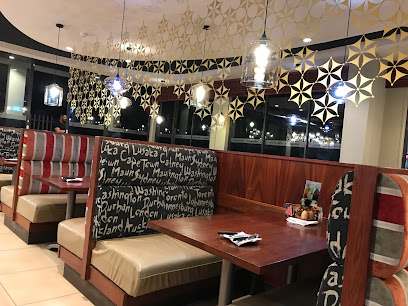
Sibebe Rock Spur
Experience delectable steaks and vibrant dining at Sibebe Rock Spur in Mbabane – where every meal is crafted with care.
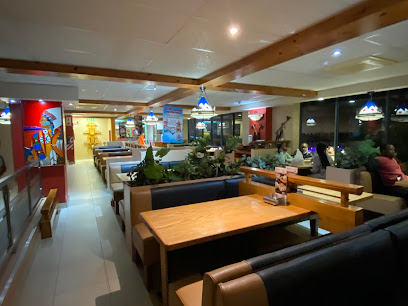
Malolotja National Park
Explore Malolotja National Park: A Majestic Wilderness Experience in Eswatini's Heartland.
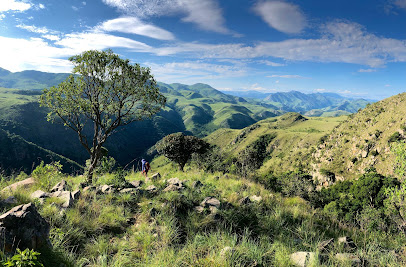
Malandela's Lifestyle Centre
Experience the vibrant essence of Eswatini at Malandela's Lifestyle Centre – your go-to destination for shopping, dining, and cultural immersion.
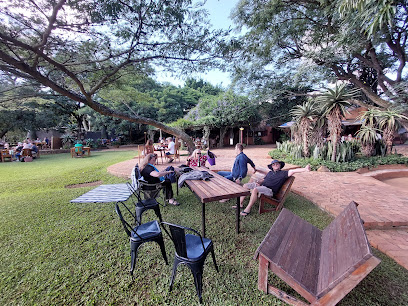
The Velvet Monkey
Discover the flavors of Italy at The Velvet Monkey, an inviting restaurant in Lobamba known for its delicious cuisine and warm ambiance.

Malolotja Canopy Tour
Discover adventure at Malolotja Canopy Tour: an exhilarating zip-lining journey through Eswatini's breathtaking landscapes.
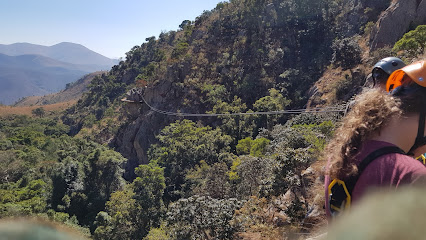
Gil Vicente Restaurant
Discover authentic Eswatini cuisine at Gil Vicente Restaurant in Manzini - where every meal tells a story.

Markets, malls and hidden boutiques
Mlilwane Game Sanctuary
Explore the breathtaking Mlilwane Game Sanctuary, a nature preserve in Eswatini teeming with wildlife, adventure, and stunning landscapes.
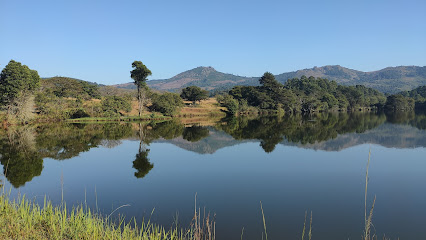
Swazi Candles
Discover the artistry of handcrafted candles at Swazi Candles, a cultural gem in Eswatini showcasing local craftsmanship and vibrant designs.
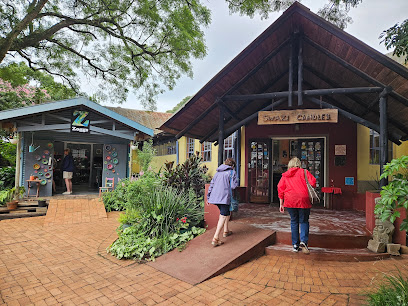
Summerfield Botanical Garden & Exclusive Resort
Experience luxury and tranquility at Summerfield Botanical Garden & Exclusive Resort, a lush haven in Eswatini perfect for relaxation and natural exploration.

Mantenga Cultural Village
Explore the cultural heart of Eswatini at Mantenga Cultural Village, where tradition meets breathtaking nature in an unforgettable experience.
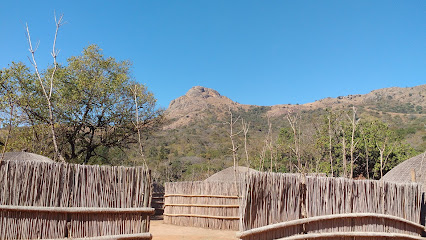
The Gables Shopping Center
Explore The Gables Shopping Center in Ezulwini, Eswatini - a vibrant shopping mall with diverse stores and delightful dining options.

Ngwenya Glass - Eswatini
Explore Ngwenya Glass in Eswatini for a unique blend of exquisite glass artistry and gourmet chocolate delights, perfect for every traveler.

Maguga Lodge
Experience the beauty and tranquility of Maguga Lodge in Eswatini, a perfect retreat for nature lovers and adventure seekers.

Hlane Royal National Park
Experience the breathtaking beauty and diverse wildlife of Hlane Royal National Park, Eswatini's largest national park, a must-visit for every nature enthusiast.
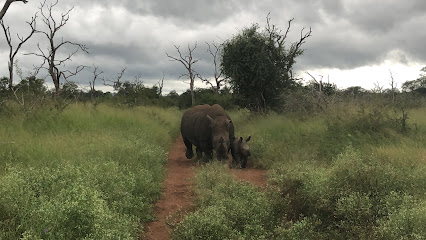
Mlawula Nature Reserve
Explore Mlawula Nature Reserve, a serene national park in Eswatini, where nature's beauty and wildlife thrive in harmony.

Malolotja National Park
Discover Malolotja National Park: A breathtaking national park in Eswatini with diverse ecosystems, hiking trails, and stunning wildlife.
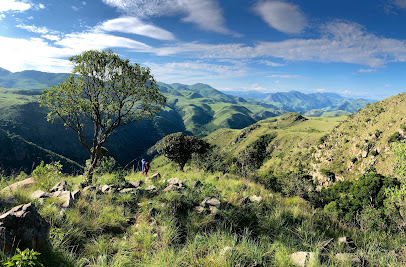
Mantenga Lifestyle & Craft Centre
Discover the vibrant culture and craftsmanship at Mantenga Lifestyle & Craft Centre, Eswatini's hub for shopping, dining, and adventure.
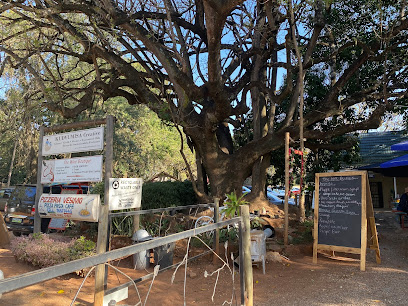
Veki's Village
Discover the serene beauty of Veki's Village, your self-catering haven in Mbabane, Eswatini, surrounded by breathtaking landscapes and warm hospitality.
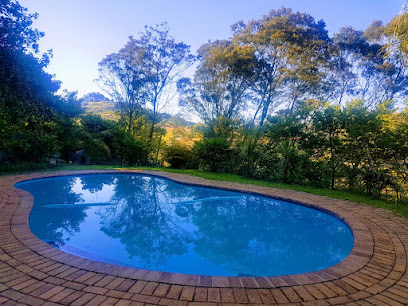
Malolotja Canopy Tour
Experience the thrill of zip-lining over breathtaking landscapes at Malolotja Canopy Tour, a must-visit adventure in Eswatini.

Hawane Resort
Discover tranquility and adventure at Hawane Resort in Eswatini, a perfect retreat for nature lovers and cultural enthusiasts alike.

Manzini Lifestyle Center
Explore the Manzini Lifestyle Center: A shopping haven with local flair, diverse dining, and vibrant culture in the heart of Eswatini.

Essential bars & hidden hideouts
Mlilwane Game Sanctuary
Explore the majestic Mlilwane Game Sanctuary: a nature preserve brimming with wildlife, scenic beauty, and cultural richness in Eswatini.
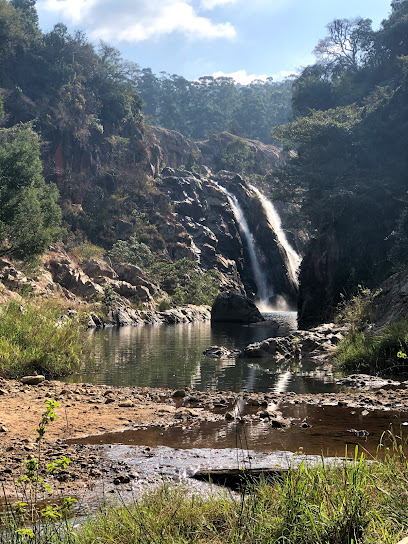
Hilton Garden Inn Mbabane
Discover the comfort of Hilton Garden Inn Mbabane, your gateway to exploring the beauty and culture of Eswatini.
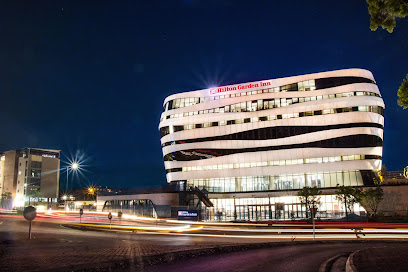
Mantenga Lodge
Discover the tranquil beauty of Mantenga Lodge, a perfect blend of comfort and nature in Ezulwini, Eswatini.
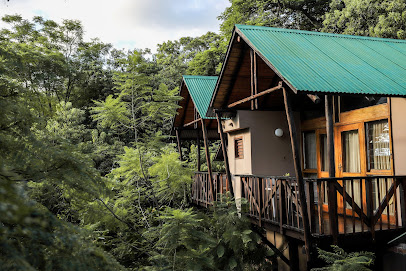
Lugogo Sun
Discover the beauty of Eswatini at Lugogo Sun, a charming hotel in Lobamba offering comfort and culture in a stunning setting.

Summerfield Botanical Garden & Exclusive Resort
Experience unmatched luxury and natural beauty at Summerfield Botanical Garden & Exclusive Resort in Eswatini, a perfect retreat for nature lovers.

Maguga Lodge
Experience the tranquility of Maguga Lodge, a beautiful retreat in Eswatini, perfect for nature lovers and those seeking a peaceful getaway.

Mlawula Nature Reserve
Experience the natural wonders of Mlawula Nature Reserve in Eswatini, a haven for wildlife enthusiasts and outdoor adventurers.
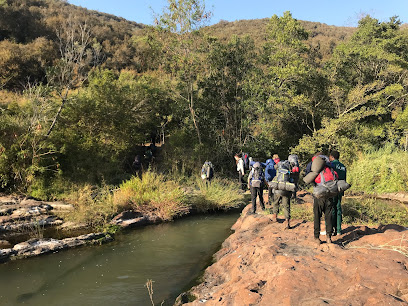
Sibebe Rock Spur
Indulge in mouthwatering steaks and delightful dishes at Sibebe Rock Spur, a must-visit steakhouse in Mbabane, Eswatini for food enthusiasts.
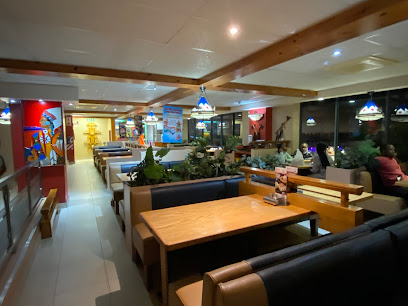
Malolotja National Park
Explore the breathtaking landscapes and diverse wildlife of Malolotja National Park, a hidden gem in the Kingdom of Eswatini.
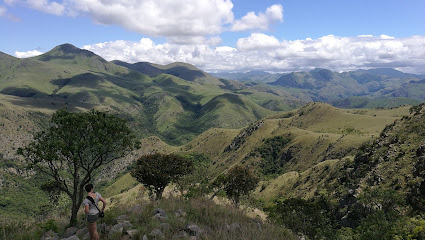
Silverstone Lodge
Experience the tranquility of nature at Silverstone Lodge in Mbabane, Eswatini, where comfort meets breathtaking landscapes.

The Velvet Monkey
Discover The Velvet Monkey, an Italian gem in Lobamba, serving authentic cuisine in a warm and inviting atmosphere that will delight your senses.
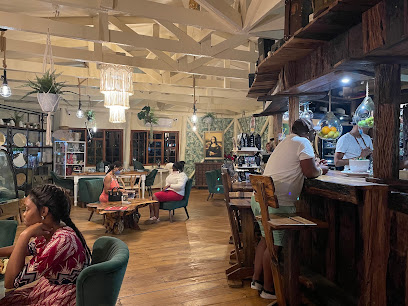
Malolotja Canopy Tour
Discover the beauty of Eswatini from above at Malolotja Canopy Tour, where adventure and stunning landscapes await.
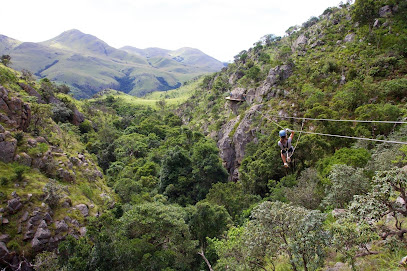
Ocean Basket Swazi Plaza
Experience the freshest seafood and a welcoming atmosphere at Ocean Basket Swazi Plaza, your premier dining destination in Mbabane.
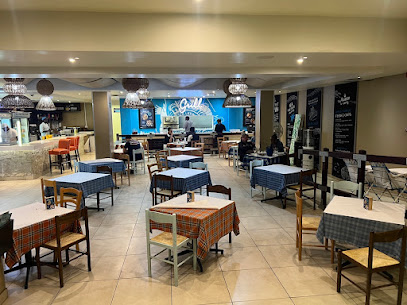
The Albert Millin
Experience the vibrant atmosphere and local flavors at The Albert Millin, a must-visit pub in Mbabane, Eswatini.

Calabash Restaurant
Experience authentic continental cuisine in Lobamba, Eswatini, at Calabash Restaurant, where local flavors meet welcoming dining ambiance.
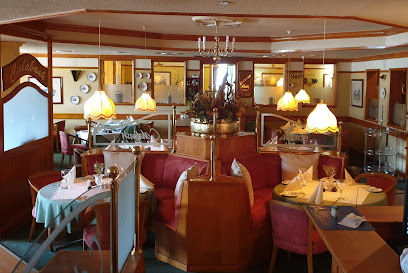
Local Phrases about Malolotja Nature Reserve
-
- HelloSawubona
[sah-woo-BOH-nah] - GoodbyeHamba kahle
[HAM-bah KAH-hleh] - YesYebo
[YEH-boh] - NoCha
[chah] - Please/You're welcomeNgiyacela
[ng-ee-YAH-seh-lah] - Thank youNgiyabonga
[ng-ee-yah-BOHN-gah] - Excuse me/SorryUxolo
[oo-SOH-loh] - How are you?Unjani?
[oon-JAH-nee] - Fine. And you?Ngiyaphila. Wena?
[ng-ee-yah-PEE-lah. WEH-nah] - Do you speak English?Ukhuluma isiNgisi?
[oo-koo-LOO-mah ee-see-NGEE-see] - I don't understandAngifuni kubuza
[ahn-gi-FOO-nee koo-BOO-zah]
- HelloSawubona
-
- I'd like to see the menu, pleaseNgicela ukubona imenyu, ngiyabonga
[ng-ee-SEH-lah oo-koo-BOH-nah ee-MEH-nyoo, ng-ee-yah-BOHN-gah] - I don't eat meatAngiyi kudla inyama
[ahn-GEE-yee koo-DLA ee-NYAH-mah] - Cheers!Oele!
[oh-LEH] - I would like to pay, pleaseNgicela ukulipha, ngiyabonga
[ng-ee-SEH-lah oo-koo-LEE-pah, ng-ee-yah-BOHN-gah]
- I'd like to see the menu, pleaseNgicela ukubona imenyu, ngiyabonga
-
- Help!Usizo!
[oo-SEE-zoh] - Go away!Hamba!
[HAM-bah] - Call the Police!Biza amaphoyisa!
[BEE-zah ah-mah-poh-YEE-sah] - Call a doctor!Biza udokotela!
[BEE-zah oo-doh-koh-TEH-lah] - I'm lostNgikhohlwe
[ng-ee-KOH-lweh] - I'm illNgikulile
[ng-ee-KOO-lee-leh]
- Help!Usizo!
-
- I'd like to buy...Ngicela ukuthenga...
[ng-ee-SEH-lah oo-koo-THEH-ngah] - I'm just lookingNgicela nje ukubuka
[ng-ee-SEH-lah nje oo-koo-BOO-kah] - How much is it?Kuyaphi?
[koo-YAH-pee] - That's too expensiveLokhu kudingeka
[LOH-koo koo-ding-eh-kah] - Can you lower the price?Uyakwazi ukusha imali?
[oo-yah-KWA-zee oo-KOO-shah ee-MAH-lee]
- I'd like to buy...Ngicela ukuthenga...
-
- What time is it?Ngubani isikhathi?
[ng-oo-BAH-nee ee-see-KHAH-tee] - It's one o'clockKuyashona
[koo-yah-SHOH-nah] - Half past (10)Kuya nesishagalombili
[koo-yah ne-see-shah-gah-LOHM-bee-lee] - MorningEkuseni
[eh-koo-SEH-nee] - AfternoonEmini
[eh-MEE-nee] - EveningNtambama
[n-tahm-BAH-mah] - YesterdayIzolo
[ee-ZOH-loh] - TodayNamuhla
[nah-MOO-shlah] - TomorrowKusasa
[koo-SAH-sah] - 1Kunye
[koo-NYEH] - 2Kubili
[koo-BEE-lee] - 3Kuthathu
[koo-TAH-too] - 4Kune
[koo-neh] - 5Kuhlanu
[koo-HLAH-noo] - 6Isithupha
[ee-see-TOO-pah] - 7Isikhombisa
[ee-see-khohm-BEE-sah] - 8Isishiyagalombili
[ee-see-shee-yah-gah-LOHM-bee-lee] - 9Kukhulu
[koo-KHOO-loo] - 10Kunye nesishagalombili
[koo-NYEH ne-see-shah-gah-LOHM-bee-lee]
- What time is it?Ngubani isikhathi?
-
- Where's a/the...?Kuphi i...
[koo-pee ee] - What's the address?Yini indawo yokuhlala?
[YEE-nee een-DAH-woh yoh-koo-HLAH-lah] - Can you show me (on the map)?Uyakwazi ukubonisa (emephu)?
[oo-yah-KWA-zee oo-koo-BOH-nee-sah eh-MEH-poo] - When's the next (bus)?Kungani isikhathi esizayo (ibhasi)?
[koo-NGAH-nee ee-see-KHAH-tee eh-see-ZAH-yoh ee-BAH-see] - A ticket (to ....)Itikithi (ku ....)
[ee-tee-KEE-thee koo]
- Where's a/the...?Kuphi i...
History of Malolotja Nature Reserve
-
Long before the establishment of the Malolotja Nature Reserve, the region was inhabited by the San people, also known as the Bushmen. These indigenous hunter-gatherers roamed the area, leaving behind rock art and artifacts that offer a glimpse into their way of life. The rock paintings, found in various caves and overhangs within the reserve, depict scenes of hunting and daily activities, serving as a testament to the San people's deep connection with nature and their profound understanding of the local flora and fauna.
-
During the late 19th and early 20th centuries, European explorers and colonialists began to map the terrain of what is now Malolotja Nature Reserve. These early explorers documented the rich biodiversity and dramatic landscapes of the area. Their detailed maps and journals provided valuable information that would later aid in the conservation efforts to protect this unique environment. The legacy of these early expeditions can still be seen in the place names and geographical features recorded in their notes.
-
Malolotja Nature Reserve was officially established in 1978 as part of Eswatini's efforts to conserve its natural heritage. The reserve covers approximately 18,000 hectares of rugged terrain, including mountains, forests, and grasslands. The creation of the reserve was driven by the need to protect the diverse ecosystems and the numerous species of plants and animals that inhabit the area. Since its establishment, Malolotja has become a key site for conservation and eco-tourism in Eswatini.
-
The Malolotja area holds significant cultural importance for the local Swazi communities. Traditional beliefs and practices are deeply intertwined with the natural environment, and many Swazi people see the reserve as a sacred space. The local communities have been involved in the conservation efforts, contributing their knowledge and expertise to preserve the natural and cultural heritage of the region. Cultural events and rituals continue to take place in and around the reserve, reflecting the enduring connection between the people and the land.
-
Malolotja Nature Reserve is renowned for its exceptional biodiversity. The reserve is home to numerous endemic species, including plants, birds, and insects. Conservation efforts have focused on protecting these unique species through habitat preservation and scientific research. Initiatives such as anti-poaching patrols, environmental education programs, and sustainable tourism practices have been implemented to ensure the long-term survival of the reserve's ecosystems. Malolotja serves as a model for conservation in Eswatini, demonstrating the importance of preserving natural habitats for future generations.
Malolotja Nature Reserve Essentials
-
Malolotja Nature Reserve is located in the northwest of Eswatini. The nearest international airport is King Mswati III International Airport in Manzini, approximately 100 kilometers away. From the airport, you can rent a car or take a taxi to the reserve. The journey typically takes around 1.5 to 2 hours by road. Alternatively, you can use shuttle services from major cities such as Mbabane or Piggs Peak, which are closer to the reserve.
-
Within Malolotja Nature Reserve, the most convenient way to get around is by renting a car, as public transportation options are limited. There are well-marked roads and trails suitable for both regular and 4x4 vehicles. Alternatively, guided tours are available, offering a more immersive experience with knowledgeable local guides.
-
The official currency in Eswatini is the Swazi Lilangeni (SZL), which is pegged to the South African Rand (ZAR). Both currencies are accepted interchangeably. Credit cards are accepted at major lodges and some larger establishments, but it is advisable to carry cash, especially for smaller transactions and in rural areas. ATMs can be found in nearby towns such as Mbabane and Piggs Peak.
-
Malolotja Nature Reserve is generally a safe destination for tourists. However, it is advisable to take standard precautions. Avoid walking alone at night in unfamiliar areas and keep an eye on your belongings. There are no specific high-crime areas targeting tourists within the reserve, but it is always best to stay vigilant and aware of your surroundings.
-
In case of emergency, dial 999 for immediate assistance. The nearest medical facilities are located in the towns of Mbabane and Piggs Peak. It is highly recommended to have travel insurance that covers medical emergencies. For minor health issues, carry a basic first aid kit and any necessary medications, as pharmacies may be limited within the reserve.
-
Fashion: Do wear comfortable and sturdy footwear suitable for hiking. Dress in layers to adapt to varying weather conditions. Avoid wearing flashy jewelry. Religion: Do respect local customs and traditions. Public Transport: Do be polite and courteous when using shuttle services. Don't expect them to run on a strict schedule. Greetings: Do greet people with a friendly 'hello' or 'sawubona'. A handshake is also common. Eating & Drinking: Do try local dishes and beverages. Avoid drinking tap water; opt for bottled water instead.
-
To experience Malolotja Nature Reserve like a local, consider visiting during the week to avoid the weekend crowds. Engage with local guides who can provide insights into the flora, fauna, and cultural history of the area. Don't miss the opportunity to hike to the Malolotja Falls for breathtaking views. For birdwatching enthusiasts, the early morning hours are the best time to spot a variety of bird species.
Trending Landmarks in Malolotja Nature Reserve
-
Mlilwane Game Sanctuary
-
Hilton Garden Inn Mbabane
-
Summerfield Botanical Garden & Exclusive Resort
-
Mantenga Cultural Village
-
Hlane Royal National Park
-
Mlawula Nature Reserve
-
Malolotja National Park
-
Malolotja Canopy Tour
-
Mbuluzi Game Reserve
-
Sibebe Rock
-
Mkhaya Game Reserve
-
Maguga Dam
-
Main Camp Shewula Nature Reserve
-
Sheba's Breast Hiking Trail
-
KaMsholo Bushveld Safaris
Nearby Cities to Malolotja Nature Reserve
-
Things To Do in Malkerns
-
Things To Do in Manzini
-
Things To Do in Mhlume
-
Things To Do in Nelspruit
-
Things To Do in Big Bend
-
Things To Do in Matola
-
Things To Do in Maputo
-
Things To Do in Pretoria
-
Things To Do in Polokwane
-
Things To Do in Johannesburg
-
Things To Do in Mokhotlong
-
Things To Do in Butha-Buthe
-
Things To Do in Durban
-
Things To Do in Leribe
-
Things To Do in Thaba-Tseka


